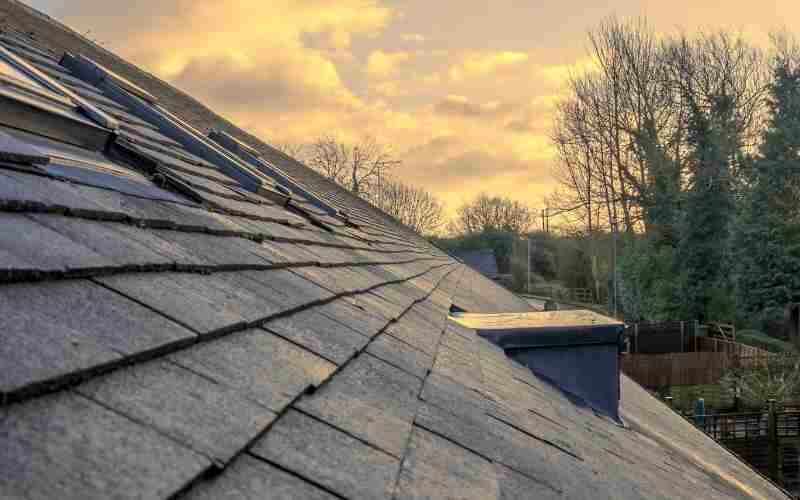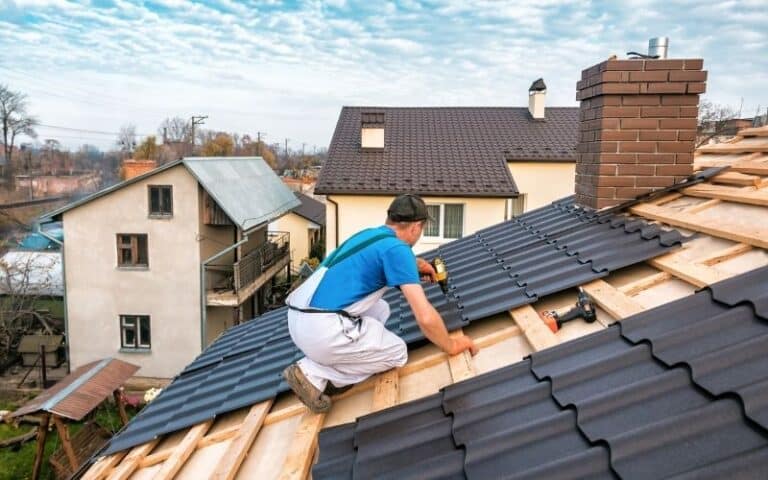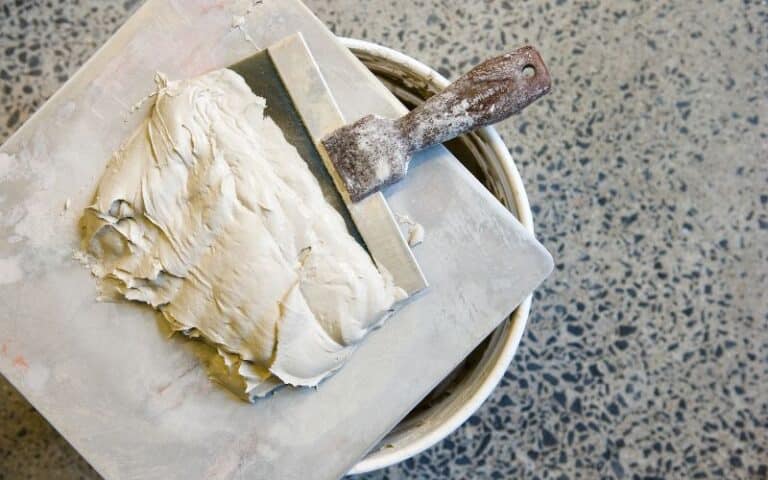I cannot overstress the importance of roofing paper in the construction of building roofs. It’s insurance against rain and snow; it also provides safety and avoids moisture penetration.
I can go on and on. Roofing underlayment is of numerous benefits. The only problem is homeowners wonder about the duration with which they can expose it.
Unlike exposed roofing felt that cannot withstand somewhat unfavorable or harsh conditions, you can expose synthetic underlayment for about 90-180 days. This is because synthetic underlays consist of synthetic substances, like polypropylene, which make them tough and ideal in events of moisture and UV exposure.
Ready for a Roofing Quiz?
How Long Can Roofing Paper Be Exposed?

Your roofing paper can be exposed for close to 90 days, and even more, provided it’s of synthetic substance. On the other hand, Roofing felts aren’t so sturdy as to be exposed for long periods.
Peel and stick underlayment is ideal for slightly higher temperatures and windstorm scenarios.
If you want your felt underlay to last, you should keep them under decent and proper conditions. They last longer only if you maintain them in suitable conditions.
Unlike felt underlays, synthetic underlays can last for more than two decades.
Don’t leave your roofing felt exposed for long periods like synthetic underlayment roofs. They degrade in no time and aren’t so durable.
Their exposure to weather shouldn’t extend to two weeks. After that, exposure to sunlight can dry them out.
Exposed roofing felt could be damaged if you leave them for long. Depending upon your climate, it could even impair in less than two weeks, maybe a few days.
In addition, you should probably know that once the underlay roofing is spoiled, your entire building is prone to water leaks and damages.
If you find that the exposed roofing felt is probably causing damage, you should contact a professional to inspect the damages.
Another significant fact most homeowners aren’t conscious of is the flammability of roofing paper. Roof underlays are very flammable.
Hence, you ought to be very careful, especially when they’re exposed. They combust in no time and spread flames around your building roof.
Felt roofs are even more explosive compared to synthetic felt. Therefore, you’re at more risk if you have your home or building installed with felt underlay.
Synthetic underlayment, on the contrary, is not so explosive and takes little time to burn. It is considered safer.
Avoid keeping fire close to exposed roofing paper, especially when the roofing paper isn’t synthetic. You can uncover roofing felt made of artificial substances for as long as three months.
I’m not saying you shouldn’t use felt underlay. You can use it, though in scenarios of prolonged exposure, go for synthetic felt.
How Long Does Tar Paper Last Uncovered?
Unlike peel and stick underlayment, tar paper can last only for a few weeks or days. They cannot last for too long uncovered.
If you want felt underlays to stay longer, expose them to the right and suitable conditions.
As soon as you start exposing them to harsh conditions and unfavorable climates for long, they’ll get damaged and tear apart.
They could even peel off and leave the plywood unprotected from leaks and decomposition.
How long your tar paper will last depends. Are there more rainstorms coming up? Will you also get windstorms anytime soon? Winds will even damage it in no time.
If there’s a lot of rain still yet to come, I advise you to use synthetic felt instead of tar paper. Tar paper dries out when exposed to the sun.
It also loses its water resistance. So you shouldn’t even leave it bare for more than a few hours in some severe cases.
I strongly advise you to keep the roof(roof felt) dry, probably more or less, until you put the shingles on. Tar paper merely provides all sorts of moisture barriers.
It gives a mediocre additional wall in minor ice or shingle damage events. Therefore, I consider its role minor.
Most roof technicians have made claims about asphalt shingle roofs being much better without felts. This debate has been ongoing among roof professionals and even homeowners.
When building, felt’s essential role is to keep water away from the plywood to limit rotting. So, if your roofing felt is some weeks old and is probably blowing off, that’s not a big issue.
Simply because they’re cheap to replace, get one here.
Your main concern should be dips and bumps in the plywood sheathing and more water exposure to the subfloor.
Can Roofing Paper Get Wet?
Roof underlays can get wet. Nevertheless, too much water can lead to severe damage to the roofing paper. It’s no doubt that roof underlays are somewhat water-resistant though they aren’t waterproof.
As a result, they are open to rain damage over a long period.
Underlayment roofs aren’t forever indestructible even though they’re durable and sturdy. If your roofing paper consists of synthetic substances, it will resist more wear and rain than typical roofing felt or tar paper.
Underlays don’t majorly play the role of retaining water. Instead, they majorly give away the flow of water down your roof.
Unlike roof underlays, the shingles can get wet for an extended period. This is because the shingles perform the heavy lifting of water away from the roof.
But if water accidentally finds its way to the roof underlay under the shingle, the waterproof underlay acts as a cover-up. It shields the decking below it. So you shouldn’t be surprised when shingles get roofing felt wet.
You should avoid placing shingles on damp roofing felt paper. Putting shingles on damp roofing felt will prevent absorbed moisture from evaporating, especially when heat from the sun is in contact with the shingle.
Felt underlayment is an essential midway layer in-between the shingles and plywood layers. It offers good insurance and prevents wet plywood decay or rot.
Even though it’s okay for your felt underlays to get wet, the dampness shouldn’t be for long.
What Happens If Tar Paper Gets Wet?
Roof felt gathers water and repels it afterward. This action allows the roof to breathe.
Your roof felt can get wet though due to the water-resistant nature of tar paper, it functions more in place as a shield.
Even though felt underlays enable water to run off roofs, they can still get damp. However, notwithstanding the dampness, they assert their integrity if they aren’t open to other elements for some time.
For example, keeping your roof felt exposed to UV and rain will result in tears or breakdown.
You must ensure that your roofing felt dries completely before the placement of shingles. Placing shingles on wet roofing felt will prevent moisture from escaping effectively and efficiently.
In addition, dampness from the tar paper will not dry up if you cover it with shingles.
Additionally, you may notice your wet roofing felt ripping in fixing the shingles. Once the felt underlayment starts damaging, it’s as good as useless.
But be sure to check the felt underlay when you’re fixing it regularly. Make sure that there aren’t tears or small spaces in it. Nothing should compromise its integrity.
Conclusion
You can expose roofing paper for a long time, provided it’s composed of synthetic substances- synthetic underlay.
90-180 is the time frame to which synthetic underlays last though they can even last beyond six months in some cases.
In contrast to the synthetic underlayment, felt underlays tear in unfavorable climates. They merely take weeks or days. Maintain them with proper conditions, and they’ll last longer.






